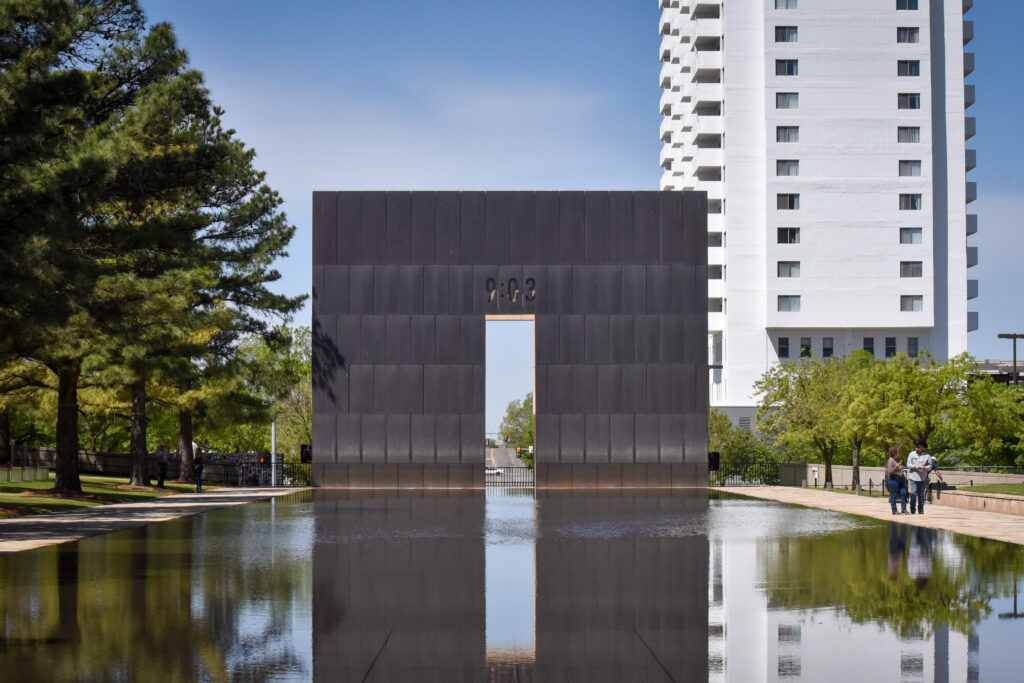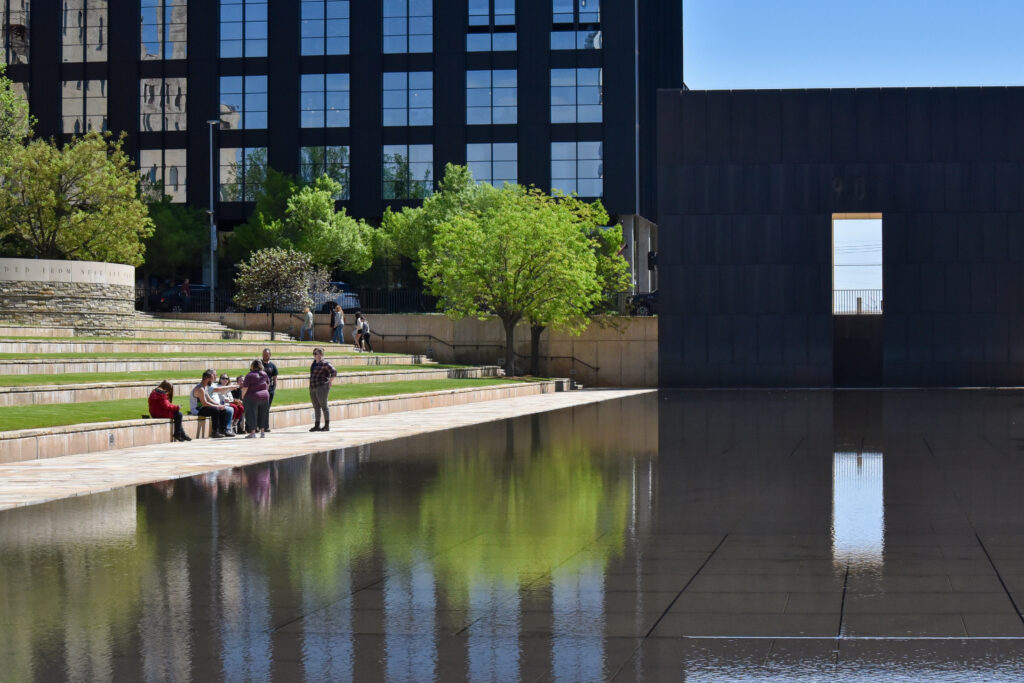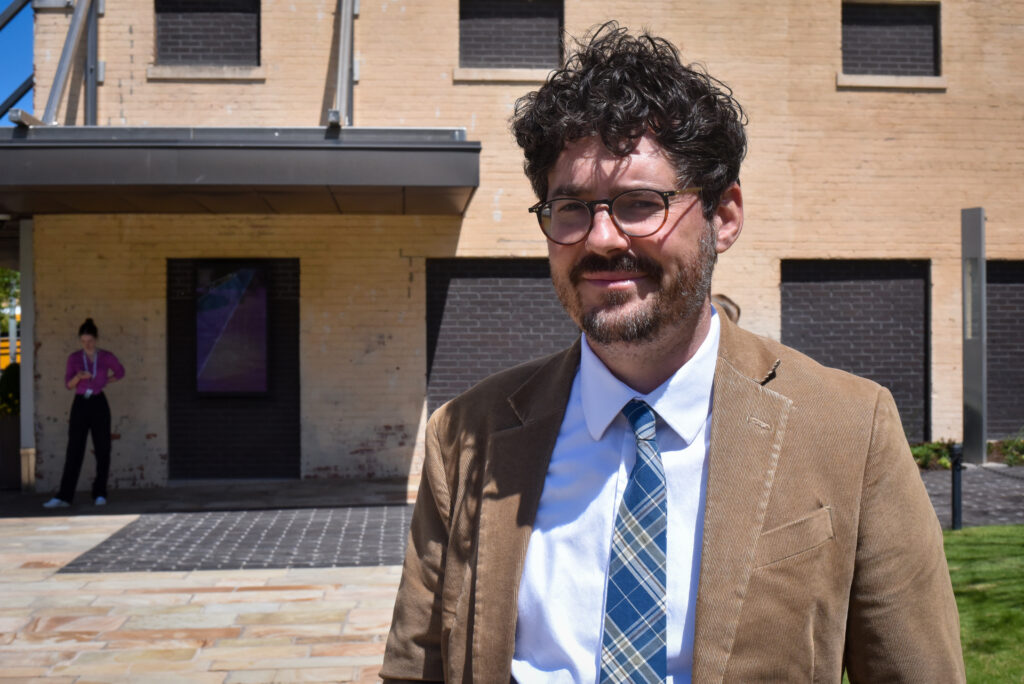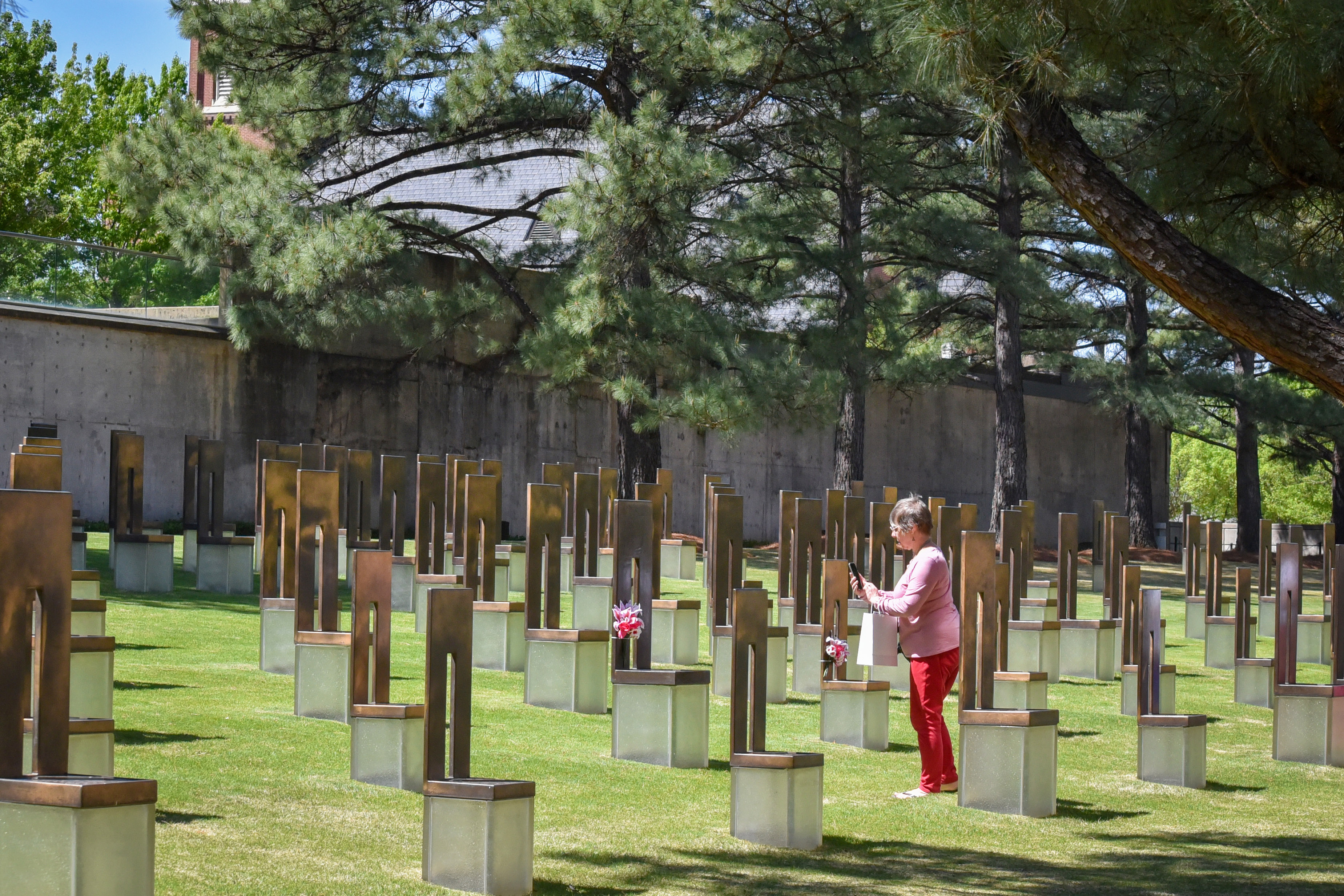OKLAHOMA CITY – The city is gathering this weekend to remember the victims of the catastrophic domestic terror attack that took place 30 years ago today. Local, state and federal officials are set to attend the city’s remembrance ceremony as well as people directly impacted by the bombing.
The ceremony launches this morning at the Oklahoma City National Memorial & Museum, and the museum will be open free to the public throughout the day, according to Stephen Evans, director of education and public programming there.
But the event is taking place at a moment in time when domestic terrorism experts say more homegrown extremism is brewing in the country.
“The alarm bells have been ringing off the hook for the last 10 years,” said Todd Helmus, a senior behavioral scientist with the RAND Corporation.
On Apr. 19, 1995, Timothy McVeigh, a military veteran who had served in the first Iraq War, set off a bomb from a rental car at 9:02 a.m. outside of the Oklahoma City federal building. On a Wednesday morning, the building was filled with federal workers and day care attendees. The bombing resulted in 168 dead including 19 children.
McVeigh had radical views about the federal government fueled by the 51-day standoff that took place between the federal government and a cult group in Waco, Texas. That standoff resulted in scores of deaths when the cult’s compound burned down on the same date, Apr. 19, two years earlier.
The revelation that McVeigh and his conspirators were right-wing American extremists launched a flurry of concern about the rise of domestic terror. Thirty years later, experts say domestic extremism is still an important issue.

Helmus is based at RAND’s Arlington office and has researched foreign and domestic terrorism threats for over two decades.
One warning sign that stands out to him is government research indicating that domestic terrorism-related investigations have been on the rise. Incidents of domestic terrorism increased 357% between 2013 and 2021, according to a fact page published by the U.S. Government Accountability Office.
The Department of Homeland Security and the FBI, the federal agencies that work to prevent domestic terrorism say domestic terrorism as an unlawful, destructive or harmful act designed to intimidate or coerce policy or government.
Helmus said that the vitriol toward President Trump is also another warning sign.
Whether that animosity feels justified or not, high intensity emotions can create potential breeding ground for extremist attacks. Helmus said one of the most visible recent examples of that hatred fueling violent political activity can be seen in the attacks against Tesla cars.
“When that gets mentioned on the evening talk shows,” said Helmus, “they get an applause.”
“That shows support for a form of domestic terrorism,” he said.
There’s also concern that the Trump administration may be diminishing funding support for groups that work to monitor, evaluate and protect against domestic terrorism. In March, multiple news organization reported that the Trump administration had cut back or frozen spending for programs that work on domestic terrorism.
Helmus said if the government is entertaining funding cuts it would be a potential risk.
“It’s important to maintain support for domestic terrorism prevention programs,” he said. “Those programs are useful because they work with local communities.”

Mekenah Jensen who works for Moonshot, an organization that focuses on finding extremist spaces online and intervening to prevent violence, also has a unique vantage point on the state of domestic terrorism in the country. She agrees the alarm bells are ringing.
“When we think about the Oklahoma City bombing,” said Jensen, “the perception was that this was very much an anti-government attack.”
“We’ve seen online that this anti-government extremism is still very prevalent,” she said.
As an interventions manager with Moonshot, Jensen helps train practitioners to do digital interventions with at-risk internet users.
One way they do that is when someone searches online for potentially harmful material – that could be a phrase or even a meme that an extremist group might use. That search can create a sort of digital ad.
“Are you lonely?” that ad might ask. “Are you dealing with depression?”
That person can then elect to engage with the content and even with trained practitioners. Jensen said some of these practitioners include mental health professionals, educational partners and law enforcement.
The company’s focus is countering extremism online because, she said, the engagement with violent extremist content is often happening online first, and it’s happening rapidly.
The FBI’s landing page on terrorism investigations describes the radicalization and recruiting presence of extremists online, both foreign and domestic, as extensive.
Jensen said that today, the extremist conversation takes aim at almost any symbol of institutional power that you can think of. Law enforcement, politicians, large healthcare companies, the government in general are all objects of online extremist ire.
What she finds more alarming is the way the conversation has moved from open forums to encrypted groups, especially when teenagers are the target.
“We’ve seen a significant and worrying trend of violent, nihilistic movements deliberately targeting youth,” said Jensen, “and they’re exposing them and leaning into those really significant grievances those individuals have.”
Jensen said that dehumanization and desensitization to extreme violence is the primary tactic in the online space for extremist groups. Engaging with that content, she said, can lead to real world violence.
“It’s making people feel like it’s a video game. It’s making people feel like these individuals aren’t actually real,” said Jensen.
She said helping people see the human context reminds them that there are lives at stake and that they can choose something other than violence.

In Oklahoma City, humanization is central to the work Evans is doing.
“When we have conversations, we take off that mask, and we humanize the other side,” said Evans. “I think it’s important in our daily interactions that we remember that, and we make an effort to get to know people who don’t share the same opinions as us.”
To facilitate conversations this week, Evans helped bring together the community for a panel discussion with authors and the presiding justice over the case against Terry Nichols, the convicted conspirator in McVeigh’s bombing.
He also held an event last night bringing together family members, survivors and first responders of the bombing for a private event that provides them a safe space to remember the tragic event.
Evans said that McVeigh’s disregard for the federal workers as human beings played a role in his motivation in the attack. Having conversation with others is the remedy for dehumanizing strangers, he said.
Evans said he’s looking forward to today’s remembrance ceremony that the museum and memorial is hosting.
“The most impactful part is we have 168 seconds of silence, and then all the names are read by the family members and coworkers and people who were there that knew and loved those that were killed,” said Evans.
“That,” said Evans, “is a really powerful part.”


You must be logged in to post a comment.